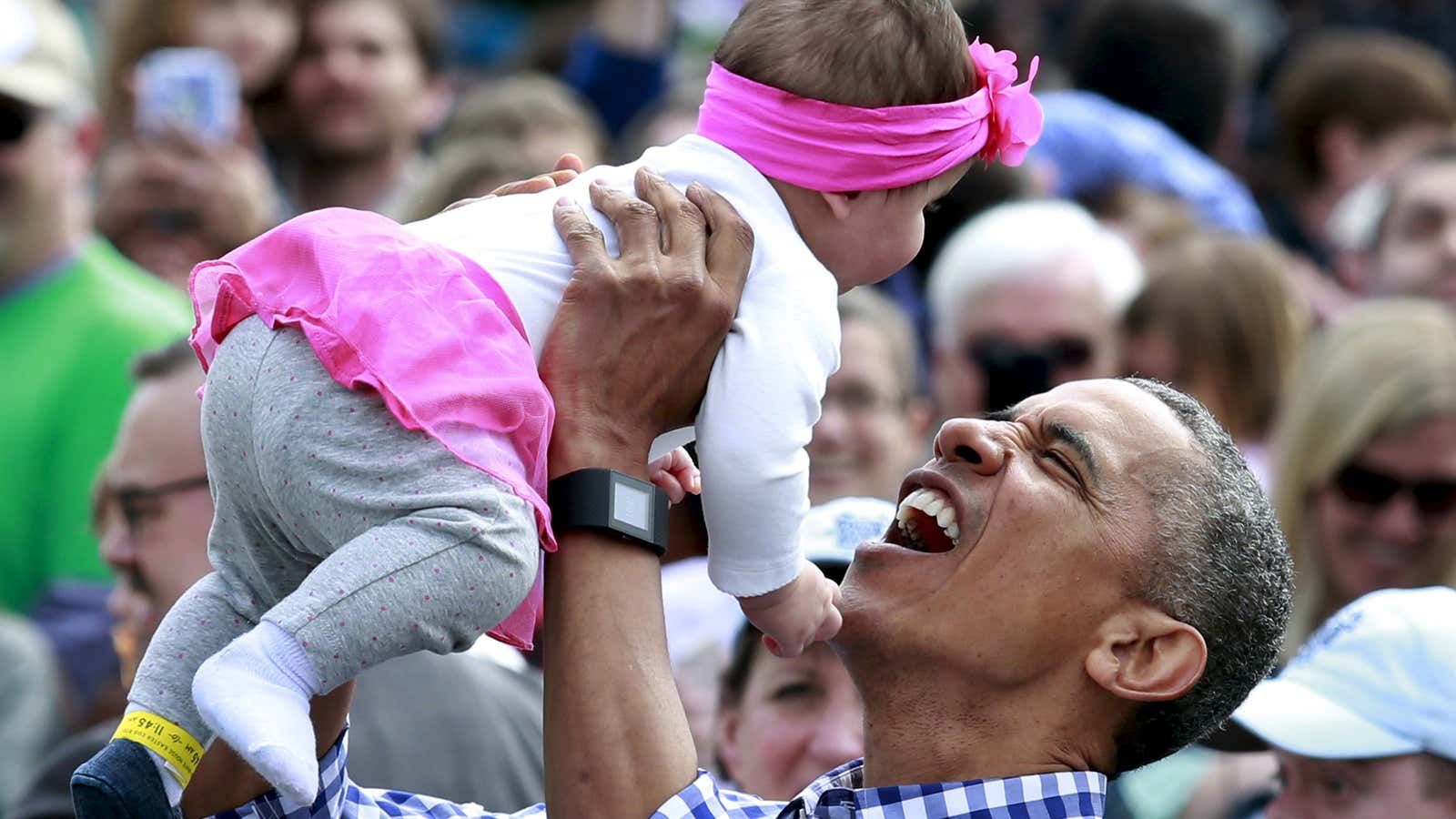Demographics are our future and until the recession America’s looked adequate. Unlike most other rich countries, in 2007 the United States had 69.3 babies per 1,000 fertile-age women (age 15 to 44), enough to keep the population from shrinking. But during the recession people put off having babies and the birth rate fell.
Years into the recovery, birth rates still haven’t reached their pre-recession levels and there is reason to believe they never will. In 2014, America produced only 62.9 babies per 1,000 fertile-age women. At this rate, America’s population will start to shrink.
The baby bust certainly can be blamed on the recession. University of New Hampshire demographer Kenneth Johnson says the recession resulted in 2.3 million fewer babies over five years. He says a similar thing happened during the Great Depression. Women who were fertile during the Depression had some of the highest rates of childlessness ever recorded. But a decade later came the baby boom and the population recovered. This time may be different.
Even before the recession, American women delayed having kids. This has been especially true for Hispanic women. Before the recession, Hispanic Americans had exceptionally high birth rates and did much of the heavy lifting to keep the population stable. In 2007, Hispanic females were just 17% of fertile-age women, but they had 25% of America’s babies. But their birth rates collapsed during the recession.
Births fell among Hispanics for many reasons. The poor economy discouraged new immigration and immigrants who were already in the US stopped having children. Some reasons reflect more positive trends. Teen pregnancy has become much less common since the 1990s. Hispanics were most likely to be teen mothers and their pregnancy rates have been declining over the last 20 years.
According to Drew DeSilver at Pew Research, the decline in Hispanic teen pregnancy was in part driven by economic conditions, but also by a generation shift that reflects more integration. A 2009 Pew Survey found 69% of first-generation Hispanic teens thought teen pregnancy was bad for society, while 86% of third-generation and higher Hispanic teens did. Native-born Hispanics tend to have more education and income, each of which are associated with lower teen pregnancy rates.
A cultural shift can also be seen when you look at births by Hispanic origin. Puerto Ricans and Americans of Cuban descent, a large share of whose populations are long established, have similar birth rates to non-Hispanic Americans. They also did not experience a recession baby-bust. The number of children they had increased by about 20% between 2007 and 2014. But births totally collapsed among Hispanic groups that contain more recent immigrants. There were 60% fewer babies born of Mexican and Central/South American origin in the last seven years.
In 2014, there was a slight uptick in births and 2015 may reveal the same because the economy is recovering and fewer women will put off having babies. But it seems the recession may have sped up a structural trend that started before the recession, in which Hispanic women have fewer babies and have them later. That will be better for mothers and the babies they do have, but bad for population growth.
Correction: An earlier version of this story said that the US birth rate in 2007 was 69.3 births per woman instead of 69.3 per 1,000 women.




